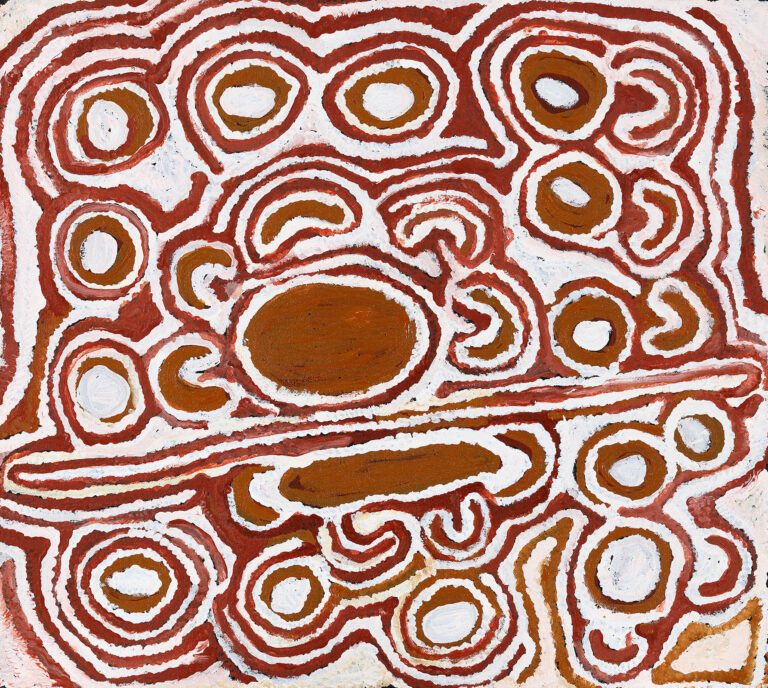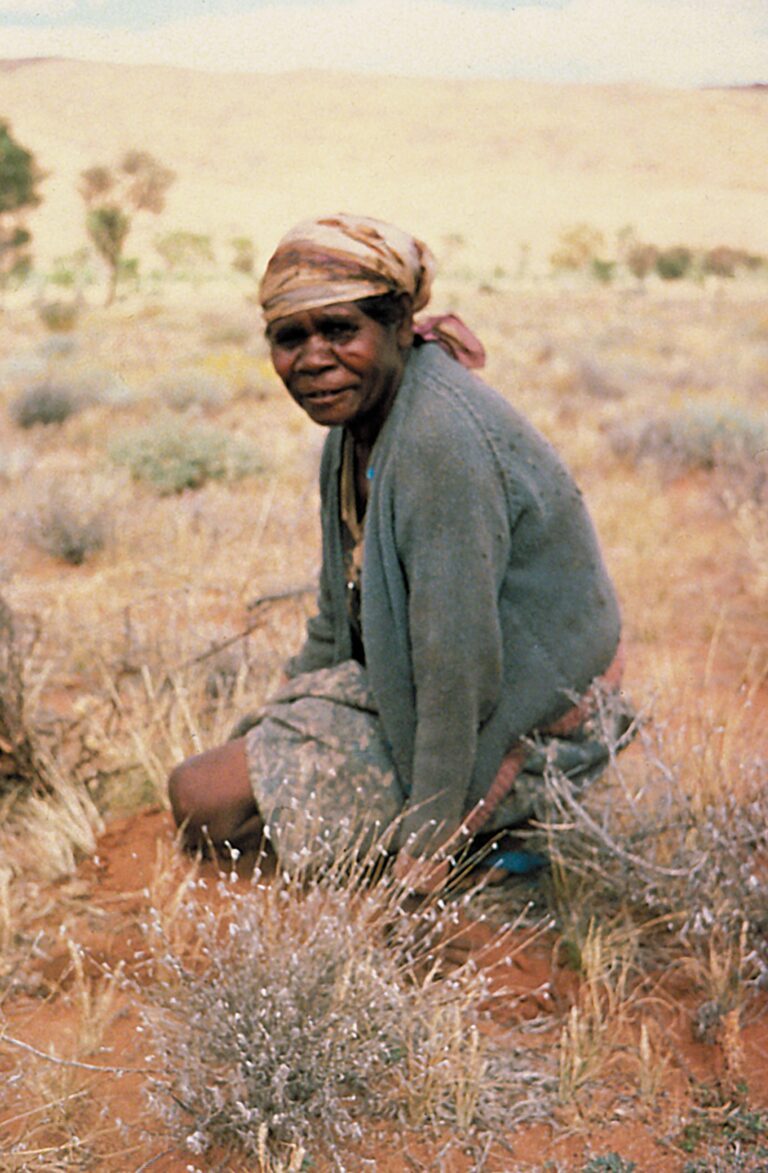

partnership
with












From her earliest works, Tjunkiya Napaltjarri hinted at what would become her signature approach, employing a limited color palette to explore the potential of contrast. In Women’s Ceremonies at Yumari, vibrant red is set against vivid white, with the juxtaposition intensified through generously applied white dots that merge to form textural fields. In later works, Tjunkiya further developed this technique, scratching lines into her thick fields of paint to create a distinct surface finish. She also established her preferred color combination, saturating the canvas with a thick coat of oranges delicately highlighted with whites along the slivers of black background that are left exposed, to create the detail within the composition. In most paintings, this elegant line work references the site of Yumari, with its rockholes captured in circular form and its sandhills in linear splices. Tjunkiya’s mother was the sister of Uta Uta Tjangala, and she would often visit Yumari with her parents. In offering constant iterations of this one location, her painting functioned as a means of reminiscing and countering the passing of time.
When I paint, I feel happy, I don’t feel sick, I don’t feel any pain. I feel strong and healthy, like I’m a young girl again.
Language Groups: Pintupi and Luritja
Dates: 1927–2009
Tjunkiya Napaltjarri was born at Rapalangya, north-west of the Kintore Community and later moved to Haasts Bluff with her husband and then to the Papunya Community when it was established. he first painted at the Ikuntji Women’s Centre in 1994 and later participated in the Haast Bluff/Kintore Women’s Paintings Camp, collaborating with other women artists on large works. Napaltjarri began painting for Papunya Tula Artists in 1996. Following the removal of her cataracts, Tjunkiya’s career exploded and her paintings were exhibited widely across Australia. In 1999 Tjunkiya contributed to the Kintore women’s painting as part of the Western Desert Dialysis Appeal. In 2000 she received a solo exhibition at William Mora Galleries and later that year her work was included in Papunya Tula: Genesis and Genius at the Art Gallery of New South Wales. Tjunkiya passed away in Alice Springs after a brief illness in April 2009.

TJUNKIYA NAPALTJARRI, Women’s Ceremonies at Yumari, 1996
Synthetic polymer paint on canvas. 24 × 21 1/2 in. (61 × 54.6 cm). Kluge-Ruhe Aboriginal Art Collection of the University of Virginia, Gift of John W. Kluge, 1997. 1997.0006.003.
© estate of the artist licensed by Aboriginal Artists Agency Ltd for Papunya Tula Artists Pty Ltd.

Tjunkiya Napaltjarri at Walungurru (Kintore), 1981.
Photo by Bette Clark.